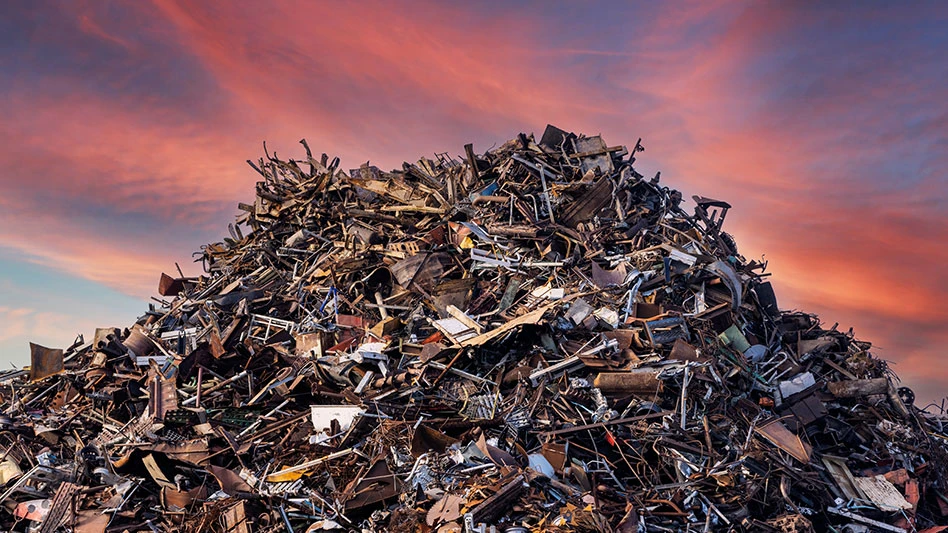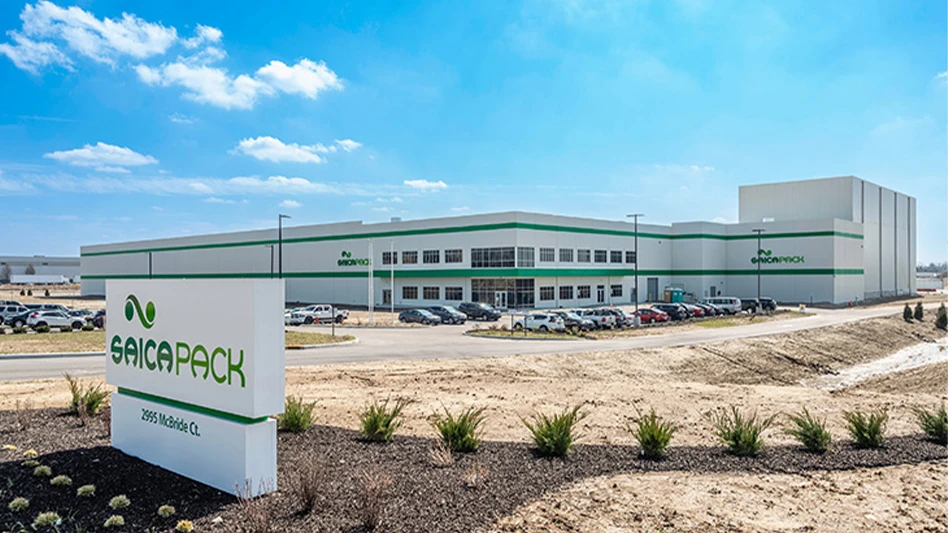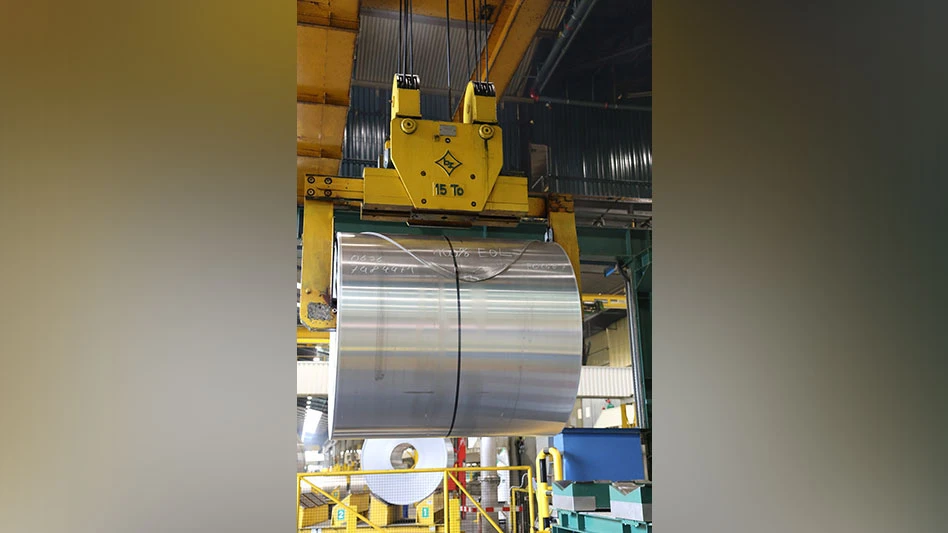I can remember buying my first load that had a problem when it arrived at the mill. The weather was kind of bad in Oregon, and we were shipping the load to California. When the load arrived, the mill called and said there was a problem.
I said, "Well, what is it?"
They said, "Well, it’s covered in snow."
Of course, I wasn’t expecting to hear that I had a snow-covered load. But they said the receiving dock had a great time—they had a snowball fight. At the time it was 90 degrees in California. I was surprised the snow survived.
My first response was to say that we didn’t charge extra for the snow. The mill got a nice chuckle out of that and said there was still the moisture deduction coming. And I began to negotiate what that deduction would be and tried to plead my case again based on the entertainment value we supplied. Needless to say, I got the full moisture deduction.
There have been many years since of trying to get the specifics right.
Secondary Fiber Inc. does use the Internet. We have continued to try to promote that and to provide ways to teach and train using the Internet.
INDIVIDUAL NEEDS
The main issue that our customers have always wanted to communicate was an understanding of their mill-specific grades. It could be groundwood levels or pressure-sensitive adhesives, which is a big issue now in office pack because of legislation like HIPAA (Heath Insurance Portability and Accountability Act) that requires those documents to be destroyed. Certainly ink tolerance and types of inks [also vary by mill].
| Balancing Act |
|
When secure destruction companies shop for document shredders, security may be prompting them to consider the smallest possible particle size, but productivity and recycling markets can be reasons to consider the other options. According to equipment manufacturers, the considerations of customers and of the National Association for Information Destruction (NAID) play a role in what customers request. "A lot of our customers consider what the NAID specifications are to meet AAA certification," remarks Chris Hawn, director of business development for waste systems at Vecoplan LLC, High Point, N.C. Hawn says that some customers, particularly those with recycling roots who can be more aware of the value that paper mills place on better fiber quality, may gear their units toward producing the largest shreds possible within the NAID specs. At the other end of the spectrum, customers who serve clients that must meet Department of Defense (DOD) shred size specifications of 3/32 inch must use screens to meet this tight specification. Mike Spiger, CEO of Ultrashred, Spokane, Wash., says his company’s mobile shredding trucks contain hammermill-style shredders usually outfitted with 2-inch screens. "Because of the way our feed system works, there is nothing that is not shredded by the hammers before it goes through the screen," says Spiger. "The hammers continue to pulverize the paper until it will fall through that screen, and once it does it is not possible for that document to be reconstructed," he comments. An option Vecoplan offers to buyers is the availability of screens in many sizes. "Our machines are flexible," says Hawn. "If they want to go small, they can do that, but then if they want to go larger they can change the screen." When considering particle size, productivity joins mill acceptance as an issue. "Using one of our shredder models as an example, it can shred about 3,000 pounds per hour with a 2-inch screen," says Hawn. "But that production goes down to 500 or 600 pounds per hour on the DOD setting." – Brian Taylor |
Qualifying samples have turned out to be one of the easiest ways to maintain a good relationship with a customer. Typically, a one- or two-pound sample is what’s required for their lab tests.
We like to provide digital photos and have always tried to insist that digital photos not only establish quality of paper, but they also establish the bale integrity. If the mill buyer has an opportunity to see how nicely they stack in someone’s warehouse, they believe that they’ll stack in theirs. Safety is always a big issue for the mills.
The supporting documentation is also important. They certainly want to know who the generators are. We do supply tags to our accounts. We like the mills knowing they came from us and the suppliers that generated them. They also need to know other information like pickup addresses.
The mills typically try to coordinate the transportation logistics themselves. Certainly, they also need the contact person at the account, phone and fax numbers. It’s important that they be able to get on the phone and contact somebody if there’s an emergency, a truck is delayed or additional loads are required.
Certainly accounting information for payables is always important to get correct: a contact person, established terms, etc.
LINES OF COMMUNICATION
The suppliers have their own particular needs. They want to understand that the material they’re generating is actually mill-specific—they have a grade the mill wants.
And it’s not just the Institute of Scrap Recycling Industries Paper Stock Inustries (PSI) chapter standards that we’ve discovered mill customers need, they may have some special requirements, like something less than a groundwood content in a PSI standard. They’re also concerned about things like ultra violets and things like pressure-sensitive adhesives—that has been in the last nine months probably the No. 1 quality issue that we have faced on grades that we ship.
I really enjoy having a library of digital photos to send to our customers. When they’re able to see loose and baled forms of raw materials, it answers a lot of questions.
Supporting documentation, again, is important for suppliers. They certainly want to understand they have a legitimate purchase order [and] what the pricing is. They’re going to need manifests [and] release numbers so there is no confusion on who shipped a load, who needs to be paid and what the weight requirements are on a shipment. You don’t like to charge people back, so you try to make these requirements known and clear from the very beginning.
| Passing the Test |
|
Secondary Fibers tends to send info out that allows people to test their martial. We want them to know as much as we know and as much as our mill customers know about qualifying that raw tonnage for their raw material needs. We will send material safety data sheets out. We do believe in a safe work environment. I can remember the groundwood test chemicals I used 15 years ago in the industry would come in a half-gallon jar. We would have to try and transfer that into little one-ounce bottles with eyedroppers to go around. Needless to say, you would spill the material everywhere, and it’s a fairly toxic material, so material data sheets are important. But the new test methods in felt tip pens are very convenient for suppliers in order to test and guarantee that their material will in fact meet our customers’ specifications.
I can remember my first test for laser. I used to have to use white out thinner. I don’t know if anybody in this room did the same thing, but the only way to verify there was laser content was to go sneak up to the secretary’s desk and taker her thinner and start testing your paper. Needless to say, we had an abundance of white out and very little thinner. A lot of bottles were thrown out because you couldn’t thin them.
Laser content verification is very important. There may also be a requirement on color on ink coverage. There are mills that are black and white only and so when you ask what the maximum amount of color, the answer is zero. That’s another tough spec to fill. But the customer is the person writing the check, the one ordering the material from you, and you’re required to provide raw materials that meet that company’s specifications.
I’ve always loved the grade of coated book stock—grade 43. It was another very tough grade to guarantee getting the specifics right when a mill customer actually said no UVs. Fifteen years ago, there wasn’t a convenient way to discover does it or doesn’t it have UV inks for coatings. And certainly the old method was to use the blender and to make yourself a hand sheet, and if it was speckled with ink, you knew you had UV. It wasn’t always convenient to find a blender and to make hand sheets in order to determine UV content. I think what was even worse was the very first change that I saw in testing techniques for UV coatings was the black light test. Well it required that you step into a very dark space, typically a closet, and then you turn the black light on and you try to discover whether there’s UV coating. Needless to say, it was a little embarrassing, every time you stepped out, someone would yell “Giles is coming out of the closet again.” You know there had to be a better way. Well, in fact there was. There is a UV and poly test pen and trust me, it is much easier to use this pen than it is to use black lights or blenders. Again, material data safety sheets are important, these chemicals are all different and you’re staff should know that it is they’re using. We will teach multiple grade accounts. It’s an easy method to simply send this information these are all jpeg files, so they can be enlarged. You can print full sheets. We will actually do the on-site training with these, but in most cases, we find that there’s sufficient information on the grade we’re asking them to produce, the test techniques for verifying that it is a good raw material for a specific mill. It doesn’t just include paper, it also includes all the plastic grades. |
I notice that I have received recently a number of mills’ requirements to certify we’ve actually trained accounts on how to load a truck. They don’t want to receive a load that is dangerous for their employees to unload.
Communicating what customers are expecting and what suppliers need to know in order to get the specifics right is really important. The accounting information is absolutely important. Suppliers want to be paid for loads they shipped. They like to be paid in a timely manner, so they do need to understand who to talk to in the receivables department and to establish net terms, etc.
We are always concerned about safety. Our mill customers, the suppliers, and unfortunately, a lot of us here do know about tragedies that have happened in the industry. Safety [and] loading diagrams are always important. A supplier certainly needs to understand those documents, they don’t want a load received at the mill, to do everything right on processing, do everything right on testing, meet the customer specs and then have a miscommunication on how to load a truck. Such documents can easily be transmitted across the Internet.
We do a lot of teaching over the Internet. Recently, I taught a class to some government agencies. We enjoy sending information that people understand. I’m going to use a grade of office pack as an example. If we’re buying PSI grade 37, sorted office pack, it may not be the total mill requirement in that published specification. A particular mill may want zero plastic windowed envelopes. That’s a pretty tall order on an office pack grade. They may want a lesser content of groundwood then a PSI standard. They may also ask for a minimum quality of white ledger. We certainly have mills that will take 100 percent colored, but some can’t. So communicating what that spec is is critical. I don’t like to have loads rejected because we didn’t communicate our mill customers’ needs.
There are also requirements on office pack for shredded content. If anyone here is exporting, you know a typical question is, "Does your office pack have shredded material?" The moment you say 100 percent, they say, "Maximum 20." We try to communicate that in a category called "additional mill requirements." It’s easy to transmit. Within minutes it’s on your computer [and] you see what the customer is asking for. A picture is worth a thousand words in many cases.
A customer will always want to know that a supplier has been visited or has received samples so that they can do lab evaluation. On the other side of the table, a generator/supplier really likes the physical visit to go over the grades that it generates, the equipment it has, the type of bales it produces, the cleanliness of the material that it can ship a product that won’t have any rejections or downgrades. Digital photos work wonderfully for the customers—they absolutely love having them. Even in conversations I had about putting this session together, a couple of our customers agreed that they were going to start their own digital photo libraries. Digital photos are very easy to take and to send … so it’s an easy way to get that information and very fast to get that to a customer.
A PICTURE OF SUCCESS
I’ll emphasize relationship issues between suppliers and customers because it’s very important.
[One could refer to this as] "Suppliers are from Venus, and mills are from Mars." Now I probably owe Dr. Gray [an apology] for butchering the title of his book, but it really is about relationships and communication.
I used some examples earlier on different grades where it may not simply be the PSI standards being applied; a customer may have some additional needs that they would like as part of their purchase order.
The mill specs and documents need to be with the suppliers. To parties must sit down and explain the difference between what the supplier currently does and what it may have to do in order to seek a new order.
Certainly a customer wants to know that he bought a load of material, which is where purchase orders come in. You don’t want to send a load that he wasn’t expecting to receive.
A supplier certainly has to have purchase order numbers to track the load that it is shipping to a mill so it can in fact be paid for it. They do have to be legitimate numbers; you don’t want to make them up, because no one will recognize them six months from now when you’re still trying to resolve a payables or receivables issue.
Trial load evaluations are very important. The customers will go through the extra effort to qualify these loads, and suppliers need to understand that it takes a little time to get the initial trial loads set up and done.
Once a transaction is done by specifications that are established by mill customers [and] agreed to by suppliers, then it pretty much goes on autopilot afterward. But it does take a little time to make sure all the information has been communicated, that in fact you can guarantee the quality of the material you’re shipping, and your load will be evaluated with a positive outcome instead of a negative one.
The author is president of Secondary Fiber Inc. in Denver. He can be reached at giles@secondaryfiber.com.
Get curated news on YOUR industry.
Enter your email to receive our newsletters.

Explore the April 2006 Issue
Check out more from this issue and find your next story to read.
Latest from Recycling Today
- Steel Dynamics cites favorable conditions in Q1
- Hydro starts up construction in Spain
- Green Cubes unveils forklift battery line
- Rebar association points to trade turmoil
- LumiCup offers single-use plastic alternative
- European project yields recycled-content ABS
- ICM to host colocated events in Shanghai
- Astera runs into NIMBY concerns in Colorado





